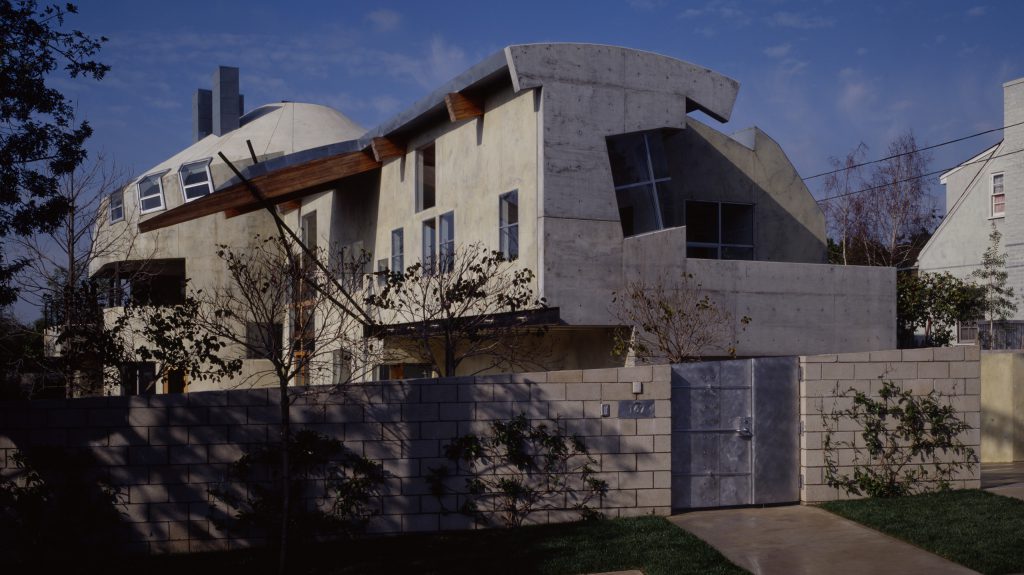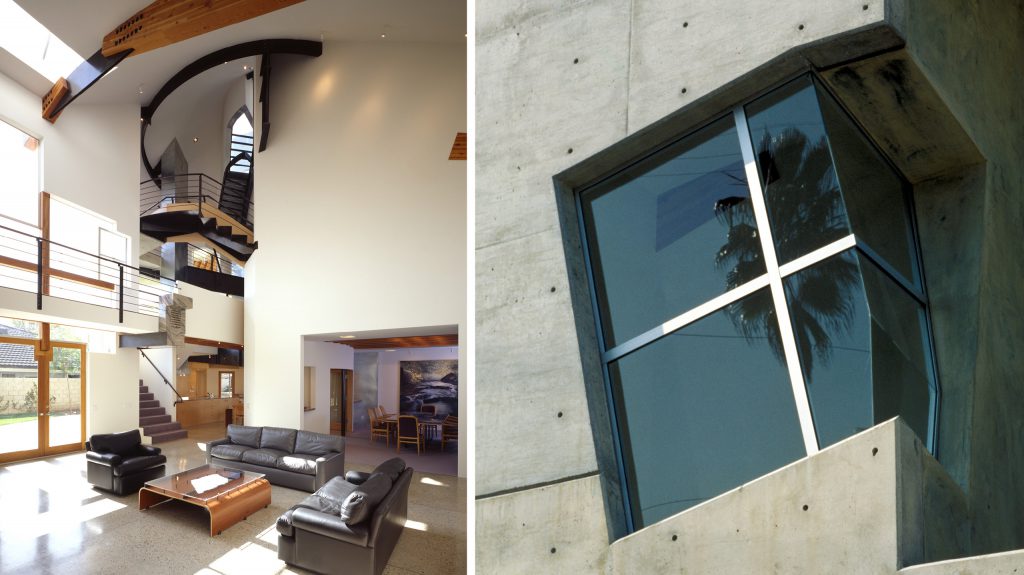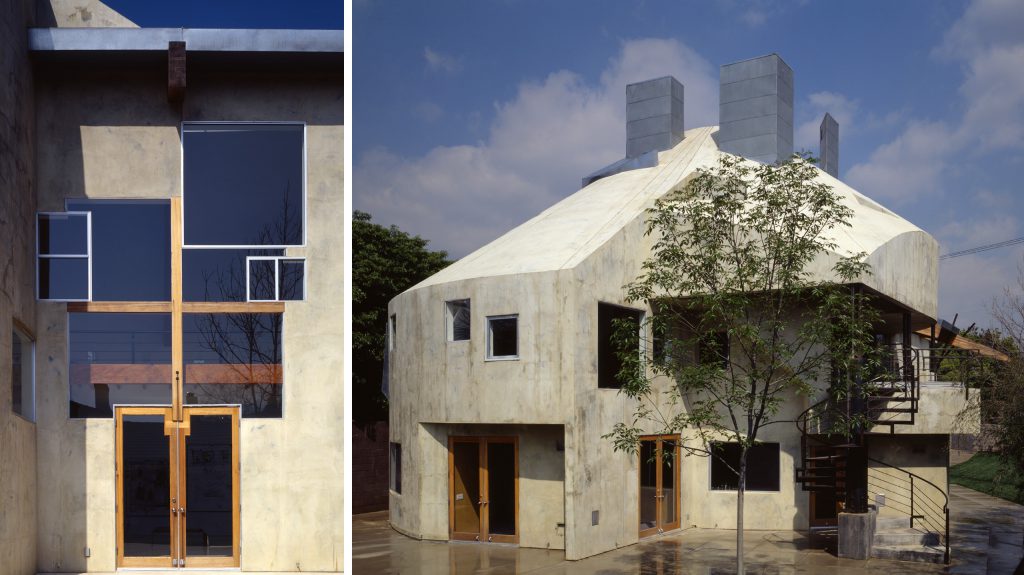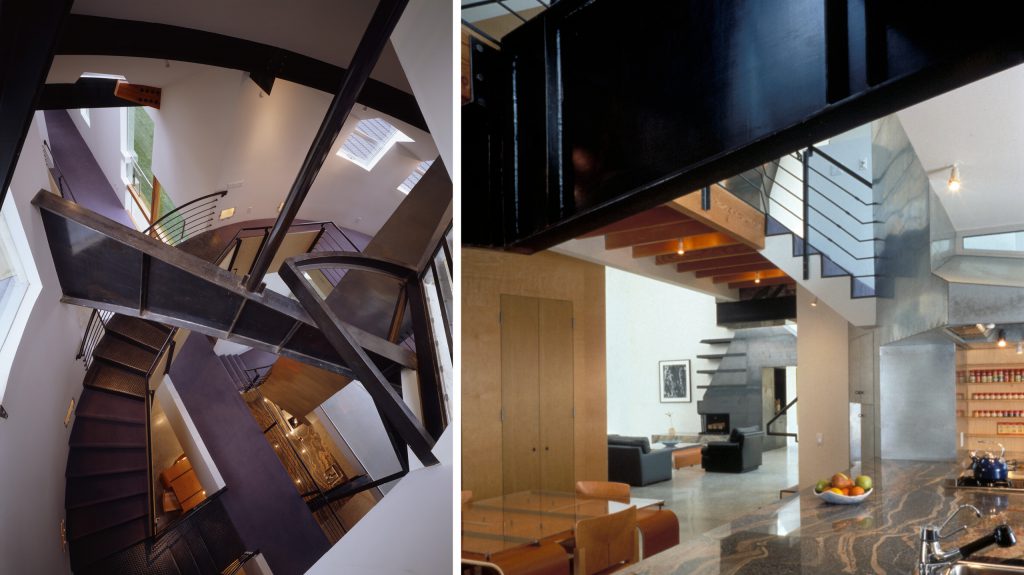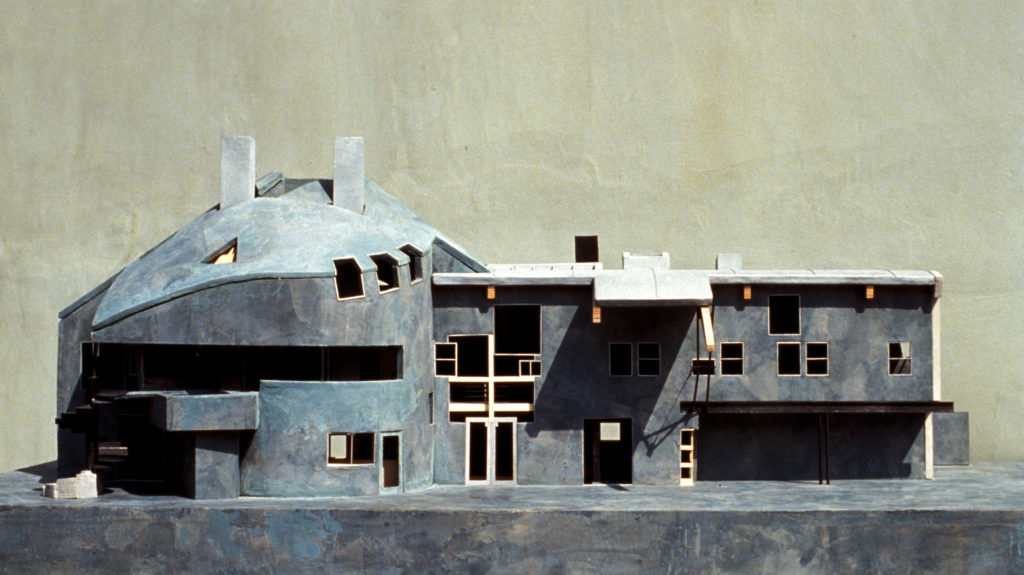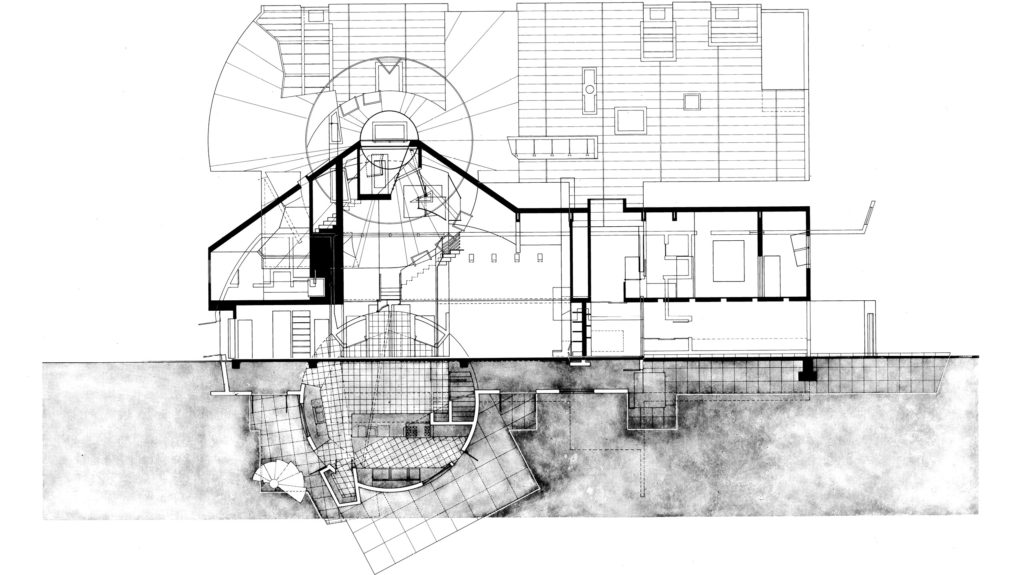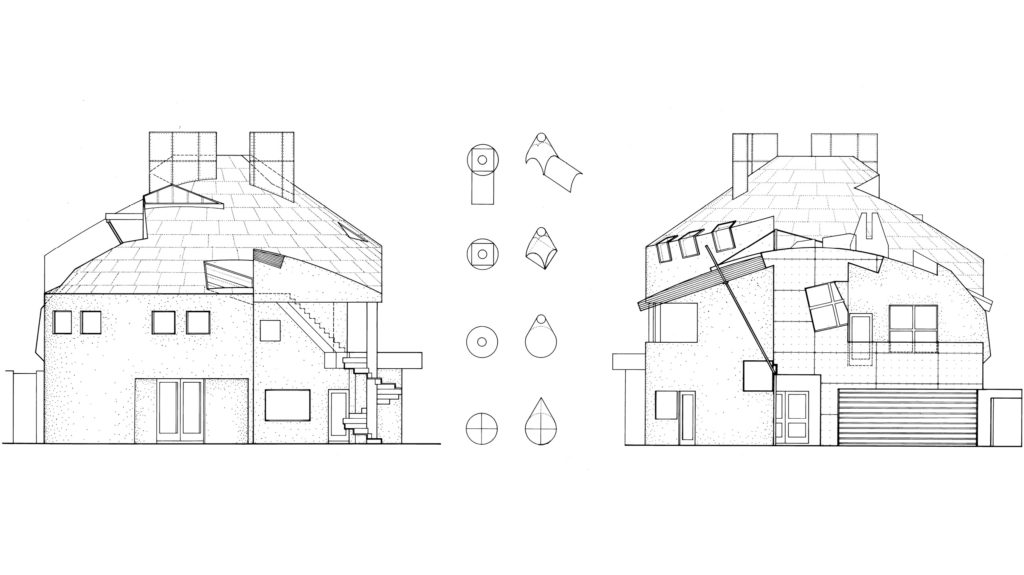Location
Los Angeles, California
Program
Single Family Home
Dates
1993
Awards
AIA/CC, Design Merit Award, 1995
AIA/National, Interior Design Award of Excellence, 1994
Los Angeles Business Council Beautification Award, 1994
AIA/LA, Design Award, 1993
Photographer
Tom Bonner
The Lawson-Westen house is located on an 80’ x 180’ suburban site on the west side of Los Angeles. The house is positioned on the north side of the lot, leaving the south side and west end as an “L” shaped garden. The clients had a very particular building program, a thoughtful reflection of how they live their lives day to day, and how the housing of their substantial art collection would inter-relate with the resolving of their practical concerns.
The kitchen, an entertainment center and gathering space, is the center of the home’s social agenda for both family and friends. The kitchen is a three level, cylindrical volume, sometimes closed, sometimes open, that contains the first floor dining and cooking areas, with living spaces of various kinds attached to the open volume on floors one, two, and three.
A second floor walkway and bridge connects the adults’ sleeping area , adjacent to the cylinder on the west, with the children’s sleeping area on the east end of the project. The bridge passes above/through the triple height living room, then on through the second level of the cylinder to the adults’ bedroom and bath. Within the cylinder, the bridge meets a stair that rises, following the profile of the cylinder wall, hanging out over kitchen and living room areas, to a third floor study at the top of the cylinder. Up another stair that follows the curve is a small outdoor deck.
The front wall of the building, facing the street, is poured-in-place-concrete. The remainder of the exterior building walls are cement plaster, applied with a wet trowel, and, as a consequence, extremely smooth.
The building investigates window types, and represents those types as an assembly of windows – a single large window made of a number of pieces — on the south elevation next to the garden. That window, in concept, represents, in the aggregate, all the window types that are found singly, elsewhere on the exterior walls of the structure.
Geometrically the center of the cylinder’s conical roof shape is not synonymous with the center of the cylinder. That explains why the intersection between cone roof and cylinder is a lines that rises and falls, rather than the horizontal line that would separate the two if their centers were the same. The cone’s apex is flattened, creating the small ocean view deck on the fourth floor. The roof of the cylinder is then theoretically inscribed with a vertical slice drawn across the cone from north to south, which describes a parabolic curve or arc. Using the theoretical curve as a template, the arc is extended from the slice in the cone, east to the end of the building on the street, describing the vaulted roof that encloses the remainder of the house. Only a portion of the theoretical vault is literally constructed. That literal instance of the completed vault occurs at the single, roof supporting glu-lam and steel rib, fully extended over the entry door. That rib – one of a sequence that support the vault — marks the full extension of the inscribed east-west parabolic line in the cone roof.
